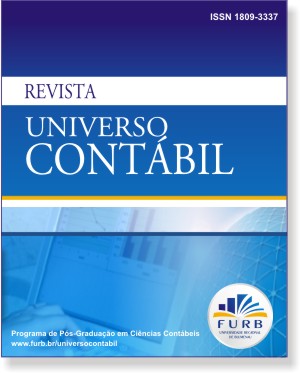INFLUENCE OF CONSERVATISM INCENTIVE IN ACCOUNTING CHOICES RELATED TO THE RECOGNITION OF LIABILITIES CONTINGENCIES PROVISION
DOI:
https://doi.org/10.4270/ruc.20106Keywords:
Adverse selection. Decision in accounting. Results management. Liabilities contingencies provision. Experimental research.Abstract
This research examines the accounting choices related to the recognition of contingencies provision in situations of adverse selection. The adverse selection occurs at the pre-contractual moment (AKERLOF, 1970), when there is an informational asymmetry between main and agent (JENSEN, 2003). By using the subjects addressed in the CVM Deliberation 489/2005, the authors try to discuss whether accountants manage or not, in real situations, not to be influenced by the surrounding in which they are. Thus, an experiment is conducted (LIBBY; BLOOMFIELD; NELSON, 2002; SPINKLE, 2003) involving 343 graduation and post-graduation students of Accounting Sciences , divided into two groups , being the surrounding in one of the groups altered by the use of a decoy (ARIELY, 2008). The scenarios were controlled by age, gender, experience level, scholarity and degree of certainty, and the results revealed a less conservative profile among the men, the inexperienced and the younger ones, which varied between doubtful and confident. In the case of the women, the most experienced ones were more conservative regarding all the proposals of the experiment, not suffering any influence from the decoy. Among the individuals who showed extreme profiles (more conservative or less) the results were relevant among the adult men and the senior ones, emphasizing the previous analyses which showed that an effective influence of the decoy occurred in the case of the men. It is verified, therefore, that the presence of a decoy can affect the decisions , and that the influence may vary according to the individual's profile, suggesting that men have a more aggressive profile and are self-directed to results management.
Downloads
Downloads
Published
How to Cite
Issue
Section
License
The copyright for papers published in this journal belong to the author, with rights of first publication for the journal. As the papers appears in this publicly accessed journal, the papers are for free use, receiving their credit, in educational and non-commercial uses. The journal will allow the use of the papers published for non-commercial purposes, including the right to send the paper to publicly accessed databases.


